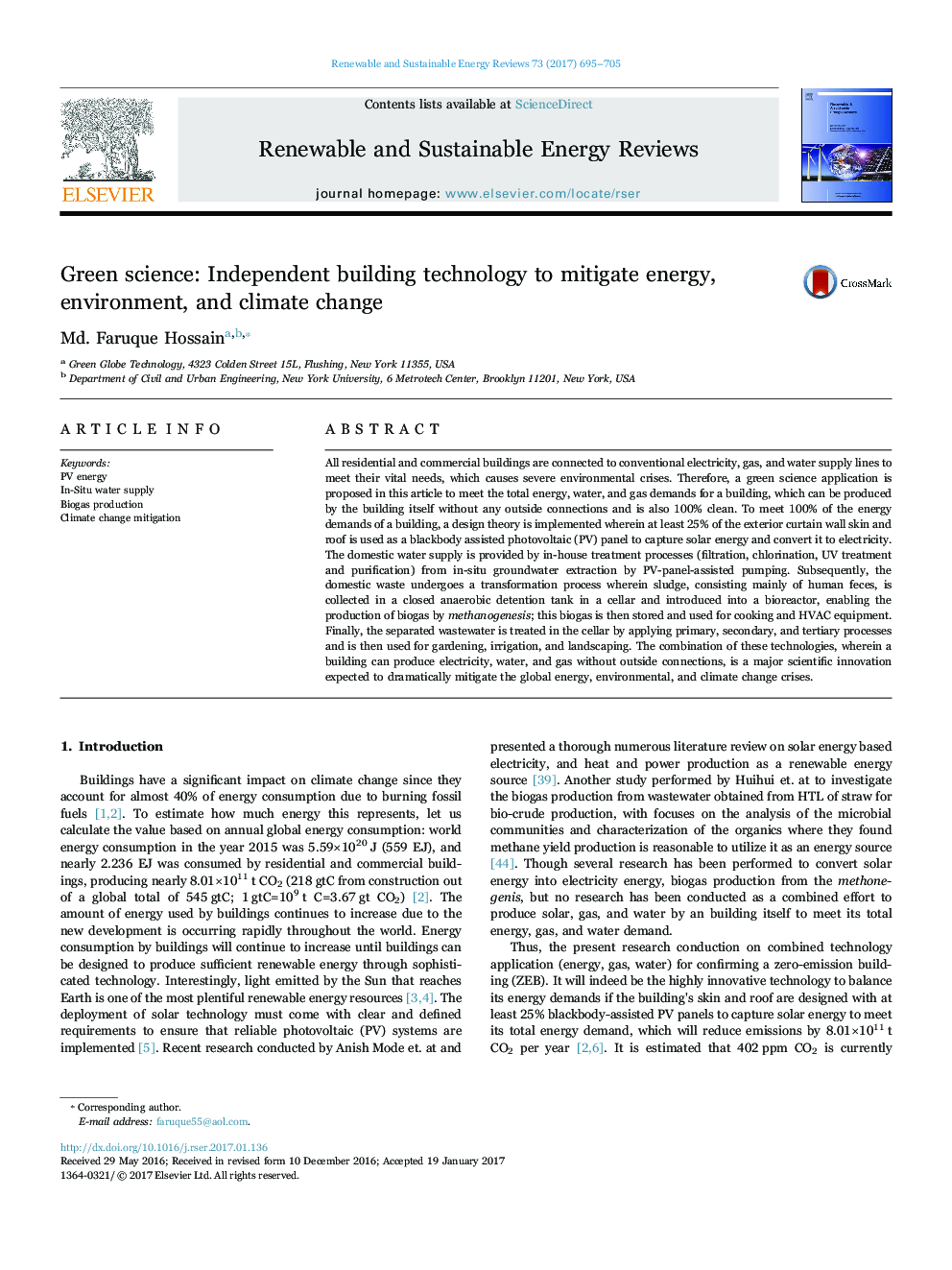| Article ID | Journal | Published Year | Pages | File Type |
|---|---|---|---|---|
| 5482293 | Renewable and Sustainable Energy Reviews | 2017 | 11 Pages |
Abstract
All residential and commercial buildings are connected to conventional electricity, gas, and water supply lines to meet their vital needs, which causes severe environmental crises. Therefore, a green science application is proposed in this article to meet the total energy, water, and gas demands for a building, which can be produced by the building itself without any outside connections and is also 100% clean. To meet 100% of the energy demands of a building, a design theory is implemented wherein at least 25% of the exterior curtain wall skin and roof is used as a blackbody assisted photovoltaic (PV) panel to capture solar energy and convert it to electricity. The domestic water supply is provided by in-house treatment processes (filtration, chlorination, UV treatment and purification) from in-situ groundwater extraction by PV-panel-assisted pumping. Subsequently, the domestic waste undergoes a transformation process wherein sludge, consisting mainly of human feces, is collected in a closed anaerobic detention tank in a cellar and introduced into a bioreactor, enabling the production of biogas by methanogenesis; this biogas is then stored and used for cooking and HVAC equipment. Finally, the separated wastewater is treated in the cellar by applying primary, secondary, and tertiary processes and is then used for gardening, irrigation, and landscaping. The combination of these technologies, wherein a building can produce electricity, water, and gas without outside connections, is a major scientific innovation expected to dramatically mitigate the global energy, environmental, and climate change crises.
Related Topics
Physical Sciences and Engineering
Energy
Renewable Energy, Sustainability and the Environment
Authors
Md. Faruque Hossain,
